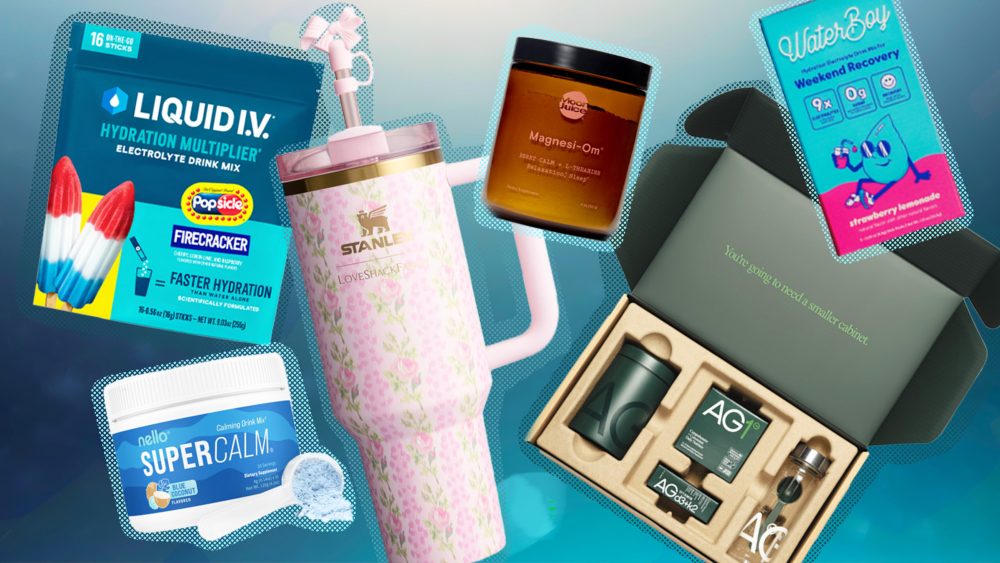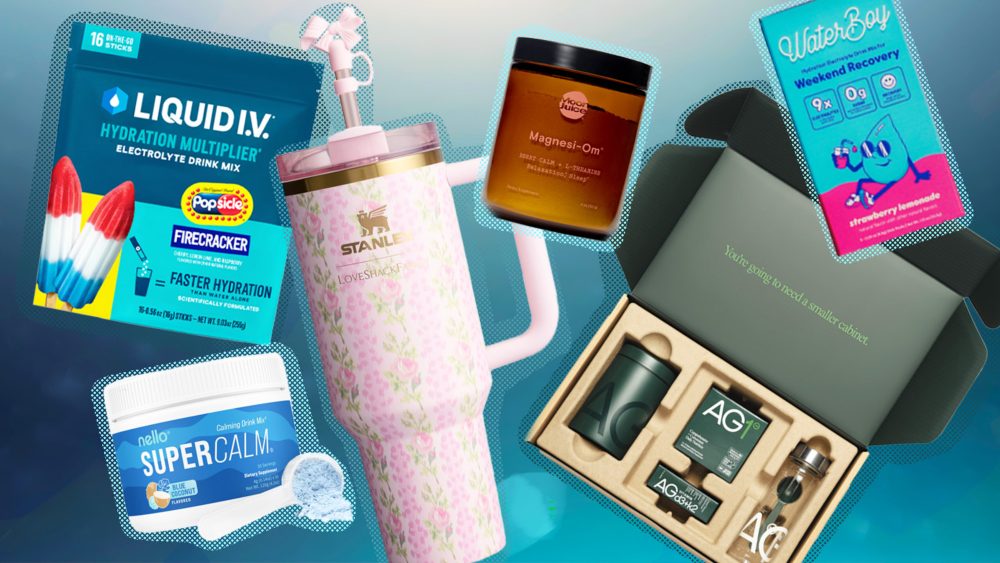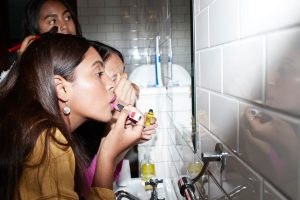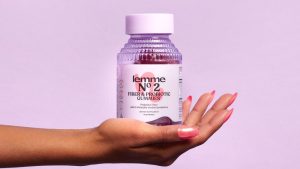
It might be a vital habit as old as time, but staying hydrated has officially become sexy.
The emergence of new brands, TikTok trends and the wider wellness boom have grown the category exponentially. From traditional sports drinks and flavored powders by the likes of Pedialyte, Gatorade and Crystal Light to more sophisticated and buzzy entrants including Liquid I.V. Hydration Multiplier, Nello Supercalm and AG1, hydration has become a key category for retailers.
According to data from Nielsen IQ, hydration supplements and electrolyte supplements reached nearly $785 million and $383 million in omnichannel U.S. sales in 2024 respectively, growing about 32 percent and 45 percent from the prior year.
While the trend has exploded on TikTok and other social media platforms, Rachel Hirsch, founder of Wellness Growth Ventures, believes it began with one brand in particular: Liquid I.V.
“Liquid I.V. created this buzz about water and that, in parallel with Stanley cups becoming a thing, has created this vortex so that [hydration] could take off,” she said.
Prior to the launch of brands like Liquid I.V., the electrolyte category was more niche, focused on athletes, hangovers or kids, rather than everyday wellness. Now, as more brands have entered the category, hydration-focused products have become a daily staple rather than a need-based product. Factor in increased consumer interest in health, pill fatigue, better tasting products and the sober-curious movement — and a trend is born.
“It’s been the fastest-growing category for us within sports nutrition over the last year,” said The Vitamin Shoppe president Muriel Gonzalez, noting hydration continued to show growth in 2025 as of January. “[The success has] everything to do with brands, flavors, telling stories [and] merchandising it in the front of the store.”
“People [are] looking for alternatives to alcohol and cocktails, so to me, it’s a story that is beyond just hydration,” she added. “It’s about how you drink, what you drink and what you put in your body.”
Amanda Nusz, senior vice president of essentials and beauty, merchandising for Target, reported that the retailer will be doubling down on the hydration segment making it a “key tenant” as it launches 2,000 new wellness products this year.
As the category develops, one important evolution has been the focus on powdered formats over bottled drinks, which used to make up the bulk of the segment. “It is economical on so many fronts, not just for a brand, but also for a consumer,” Hirsch said.
With the category still in growth mode, experts agree it’s not slowing down, partially because consumers love it and partially because everyone simply has to drink water. The question remains, could these types of powders reach a level of success comparable to gummy vitamins? Experts say maybe.
“I don’t know that a dissolvable powder is quite as pleasurable as a gummy, but maybe hopefully, the benefits of it not having as much sugar and its ability to enter your bloodstream might get it there,” said Hirsch.
Here, a deeper look at the recent evolution of the hydration category and where it’s headed.
Greens Powders

Prior to the greens powder movement, the hydration category was dominated by ready-made beverages like Gatorade and Pedialyte and flavored water packets that provided little benefit like Crystal Light. Then brands like AG1 and 8Greens hit the scene, shaking up the category with flavored powders filled with greens and a slew of other nutrients. According to experts, before the electrolyte boom, greens powders were shaking up the drink powder category first and have continued to boom thanks to influencers who feature the products daily.
“The demand for products that promote overall health and wellbeing has substantially increased from a strictly health-optimizer consumer to an everyday consumer looking to make more healthful choices on a daily basis,” said AG1 CEO Kat Cole.
Now seemingly every brand has its own variation — fan favorites include Better Greens, Cymbiotika, Thorne, Bloom and more. TikTok-favorite brand Nello also recently reformulated its version to better reach consumers.
Electrolytes

Following the boom of greens powders, electrolytes got a refresh, initially thanks to Liquid I.V.
“The powdered hydration space used to be a sleepy category, untouched for decades,” said Liquid I.V. CEO Mike Keech. “Culture is at the forefront of everything we do, it allows us to show up for our consumers in places their interests already lead them to. We’ve been able to flip the category and be at the forefront of trend-setting by creating a process designed for consumer engagement, moving at the speed of culture.”
For Liquid I.V., this looks like investing in what customers are asking for, namely sugar-free formulas, exciting flavors like cotton candy or popsicle firecracker, partnerships with influencers and major events.
However, Liquid I.V. is no longer the only brand in the game. There’s Lmnt, a zero sugar and extra salty version geared toward athletes. There’s Cure Hydration, which uses coconut water for an entirely plant-based formula. There’s Moon Juice which has taken a more toned-down approach with a lower sodium content for those who aren’t elite athletes, while WaterBoy has created options for multiple-use cases, including daily hydration, hangovers and workout recovery.
As the category has grown and consumers have become more familiar with the term, electrolytes have gone beyond just ingestibles, per Nielsen IQ. They are being called out in everything from food like GoGo Squeez Active, $10, to beauty products like CocoKind Electrolyte Water Cream, $20.
The Cup Craze

As greens powders and electrolytes became the daily norm, water bottles quickly became an accessory rather than a necessity. Brands like Stanley 1913, Owala and Bink have become status symbols for water enthusiasts.
“You are seeing [customers] want to integrate it into their daily life,” said Nusz. “They’re carrying it around. It’s like a bag.”
Now, the trend has gone beyond the bottles themselves with straw topper accessories, bottle charms, holder bags and rubber boots that protect the bottom of the vessels.
“It’s such a beautiful way for us to individualize ourselves as we walk through the world,” Hirsch said.
With hydration top of mind, experts say that consumers have higher expectations for their water bottles. “They want something easy to carry, convenient (think handles and cupholder-friendly designs), and of course, they want it to work — like, really keep drinks cold,” said Stanley 1913 vice president of corporate communications Erica Samadani.
These companies have quickly tapped into the consumer craze, creating a frenzy for collecting limited-edition cups. For example, Stanley has done several collaborations with brands like LoveShackFancy and E.l.f. According to Target, its exclusive Valentine’s Day collection with the retailer sold out in one week.
“Collaborations are a huge part of how we connect with culture,” said Samadani. “We look for collabs that feel authentic and make sense, whether it’s with someone like Leo Messi, Olivia Rodrigo, Barbie or LoveShackFancy. These partnerships allow us to reach new audiences and connect with people who appreciate the same things we do: quality, style and the importance of community.”
WaterTok, Sexy Water and Mocktails

Sleep is one of the top need states in the wellness industry, which ultimately led to the rise of the sleepy girl mocktail. Comprised of magnesium powder, tart cherry juice and a prebiotic soda like Poppi, it quickly became a viral trend across social media. Spate reports that it has grown nearly 1,000 percent year-over-year on TikTok and maintains high consumer awareness.
According to Moon Juice founder Amanda Chantal Bacon, the brand invented the concept after creating the drink and seeding it to influencers, and it ultimately skyrocketed the sales of its Magnesi-Om Powder, $44 — now the brand sells one per minute.
Prebiotic soda brand Poppi became synonymous with the trend as well and was quick to hop on the bandwagon.
“We had something up [on social media] within an hour [of finding out about the trend],” said Poppi cofounder Allison Ellsworth.
Newer companies like Nello, which has sold more than 1 million units of its Supercalm, $40, have taken hold in the sleepy girl mocktail conversation, and many others have followed suit launching their own take on the bedtime drink, including Cuddle, Bed Babe, The Absorption Company and Shore Magic.
All of this paved the way for broader trends around consuming water in general, most notably WaterTok on TikTok and Sexy Water, coined by influencer Kelly Grace Mae, across platforms. Both trends look at stacking supplements into water for a healthier and tastier drink.
Mae previously told WWD: “Sexy water became this romanticized time for me to, in the morning, drink my water and make it more fun. It felt like less of a chore and more of this self care ritual that I got to do while also habit-stacking.”
Additionally, many of these trends around hydration work in tandem with the growing sober-curious movement. Experts predict the hydration and mocktail trends will continue to converge, as consumers are increasingly concerned about alcohol consumption given the U.S. surgeon general’s recent announcement regarding its link to increased cancer risk.
MultibenefitProducts

While hydration supplements originally focused on one thing, with sleep supplements, functional mocktails and greens powders, the products have become more multifunctional. Experts agree the future of the category will focus on these increasingly sophisticated formulas. Therefore, expect more of multibenefit products, like WaterBoy’s Weekend Recovery, $25, formulated for hangovers with electrolytes to replenish, ginger to prevent nausea and L-theanine to help with “hangxiety.”
“We’re seeing a growing interest in functional hydration products, so those would be those that supply that health benefit, like vitamins [and] minerals,” said Nusz, highlighting brands like Bloom, Liquid I.V., Unwell and Poppi.
Nielsen IQ’s data shows that other significant use cases that consumers are seeking out include digestive health and immunity which could easily be implemented into these expanding hydration offerings. While still very small, emerging use cases include cellular function and estrogen support.
Beauty Inc Recommends
-

EXCLUSIVE: Olly Brings Its Benefit-forward Approach to New Body Care Line
-
Body Care
-
By
Emily Burns
-
-

The ‘Carnivore-ification’ of Beauty and Wellness
-
Wellness
-
By
Emily Burns
-
-

EXCLUSIVE: Jenna Bush Hager Teams With ResortPass to Rethink the Laws of Motherhood
-
Wellness
-
By
Kaleigh Werner
-
Source: https://wwd.com/






More Stories
Glosslab, in Chapter 11 Bankruptcy, Enters Asset Purchase Agreements
EXCLUSIVE: Kourtney Kardashian Barker’s Lemme Is the Latest Brand Aiming to Make Fiber Cool
Walgreen Boots Alliance Is to Be Acquired by Sycamore Partners